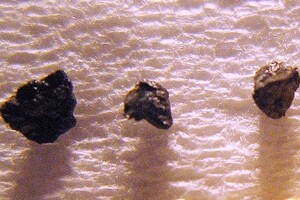The age of the stone is estimated at 4.5 billion years.

Scientists say they managed to find the first traces of a supernova explosion found on Earth. The researchers came to this conclusion by carefully studying the extraterrestrial stone Hypatia, found in Egypt in 1996, according to Science alert.
The chemical composition and structure of the rock indicated that this stone contains traces of dust and gas that surrounded the supernova. type Ia. Such explosions are the most energetic events in the universe, they occur when a dense white dwarf absorbs another star.
Read also: Scientists talk about the connection between supernovae and life on Earth
According to scientists, over billions of years, dust and gas have solidified to form the maternal body that gave rise to Hypatia, which is the same age as the solar system.
because the gas atoms from the explosion were captured by the surrounding dust cloud, which eventually formed the parent body of Hypatia, “said geochemist Jan Kramers of the University of Johannesburg in South Africa.
According to researchers, the sample contains extremely low levels of silicon, manganese and chromium, which indicates that the rock was not formed in the inner solar system. Scientists have also recorded high levels of iron, sulfur, phosphorus, copper and vanadium, which also indicates that the object was formed in outer space.
Analysis of the elements of Hypatia has shown that their composition differs from that which could form in the rocks within the solar system or in our arm of the Milky Way. Scientists have also rejected the idea that the parent body was formed from the remains of a red giant. it has too much iron compared to silicon and calcium, so it is likely that the object was caused by a supernova explosion type Ia.
Such explosions should produce an interesting combination of elements in rocks similar to those that were recorded in Hypatia. Scientists have analyzed 15 elements, some of which correspond to the rock formed by the explosion of a dense white dwarf. But the six elements do not correspond to the explosion of the supernova type Ia. Scientists believe that their presence may be explained by an event that occurred in the distant past of the star's existence.
Earlier, astronomers from the University of Florence said they had found traces of the first stars to appear in the universe. It is believed that their elements are contained in the star AS0039, which is located in the dwarf galaxy Sculptor at a distance of 290 thousand light years from Earth.




